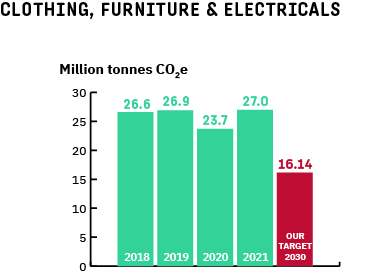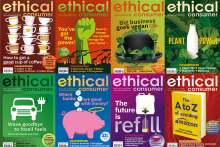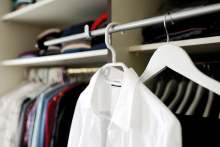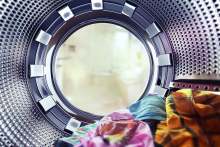Actions taken this decade will be crucial in mitigating the worst impacts of climate breakdown. Yet, according to our Climate Gap research, we are not cutting emissions fast enough across any of our key lifestyle areas - including consumer goods such as clothing, furniture and electrical items.
Consumer goods and climate change
Our consumer goods account for 10% of our total consumer emissions.
For this area of consumption we look at emissions from consumer goods, purchases of secondhand good and repairing of products, and supply chain carbon reporting by companies.
A key finding of the report was that it is not possible to manage an economy rationally towards urgent climate goals without meaningful and timely performance data. The broad area of consumer goods is particularly patchy for reliable and recent data.
Disappointingly, the data indicate that the estimated carbon footprint from consumer goods is increased by 14% in 2021 from the previous year. This is likely to be telling us little more than that the pandemic lockdowns reduced people’s ability to buy consumer goods, and without more up-to-date information we don't know the current trend.
Emissions reporting by companies
Of the 40 companies we check each year for full Scope 3 emissions reporting, which includes the production and processing of materials going into products and the use of products after sale, the proportion reporting rose from 70% to 80%.
Of those that had year-on-year Scope 3 figures to compare, more were now going down (20 companies) than up (10 companies).








